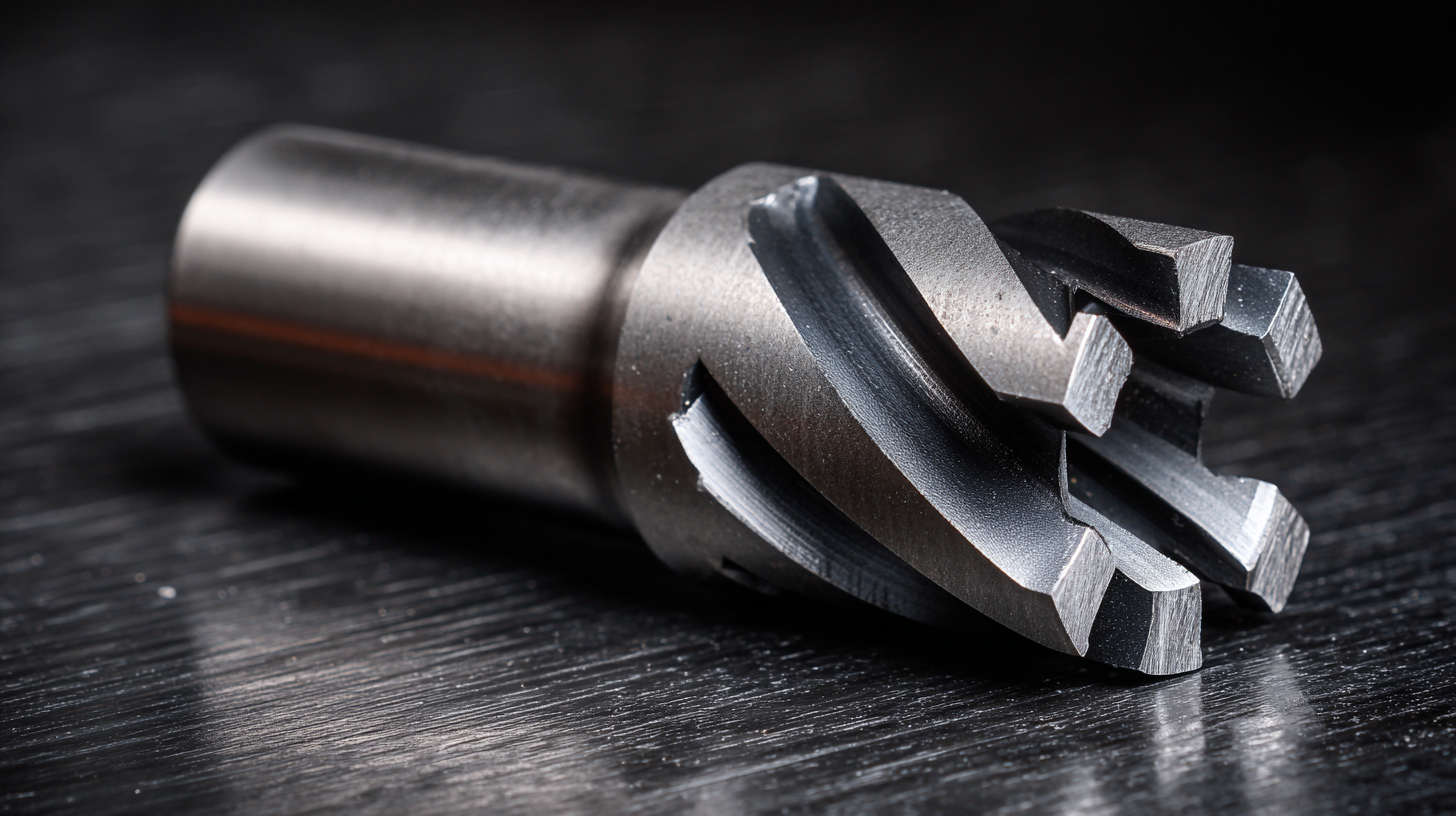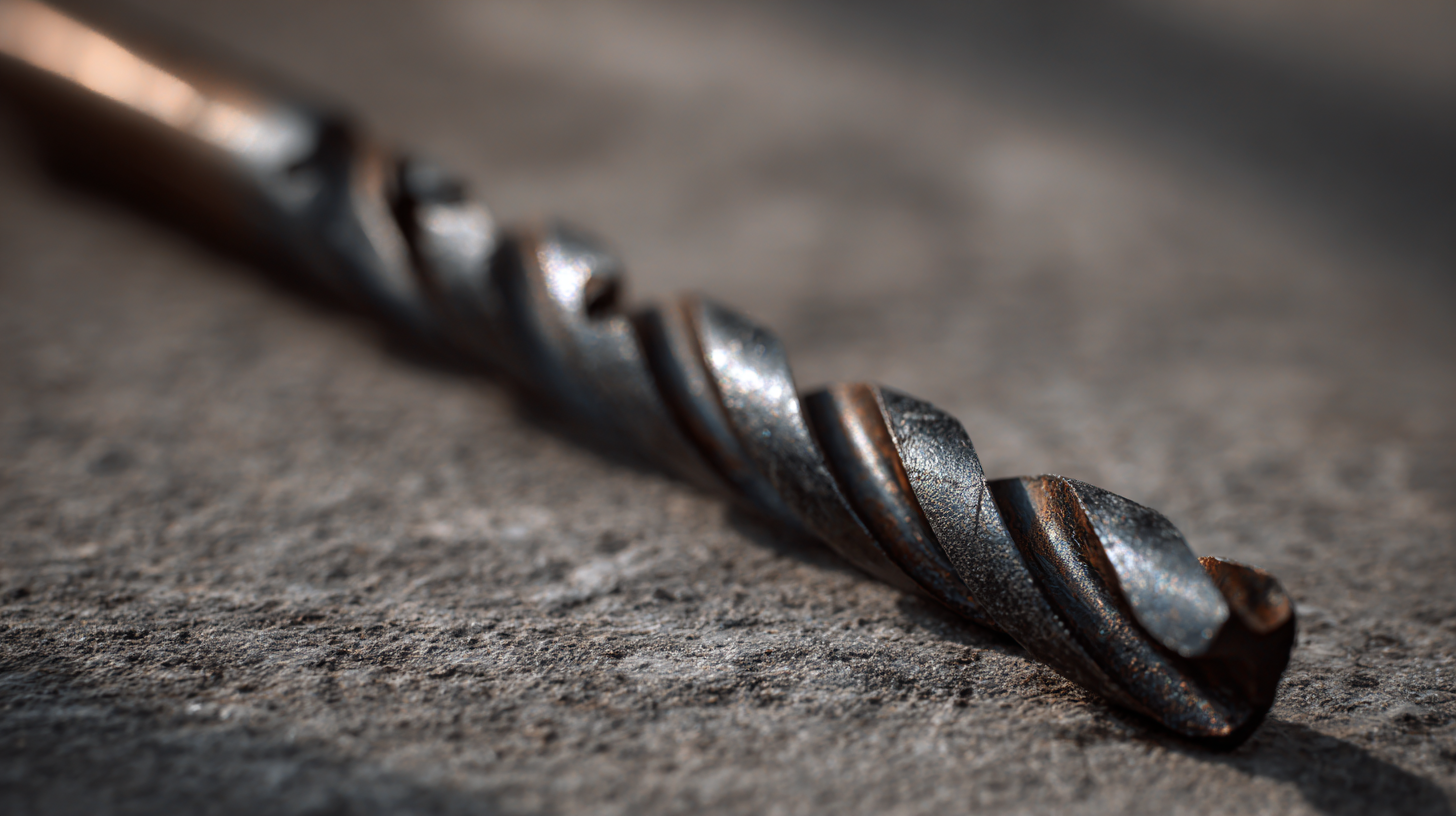FREE SHIPPING ON ALL BUSHNELL PRODUCTS
Leave Your Message
When it comes to drilling through metal, choosing the right tool is crucial for achieving clean and precise results. Among the various options available, the Hole Saw Drill Bit for Metal stands out as an indispensable tool for both professionals and DIY enthusiasts. This specialized equipment not only allows for creating larger holes than standard drill bits, but it also ensures a more efficient cutting process, minimizing material waste and reducing the risk of damaging the workpiece.

In this blog, we will delve into the features and applications of the best hole saw drill bits for metal, showcasing practical examples that highlight their versatility and effectiveness in various tasks. Whether you're engaged in construction, plumbing, or metalworking, understanding the right hole saw bits to use can make all the difference in your project’s success.
 When selecting high-quality hole saw drill bits for metal, several key characteristics should be prioritized to ensure optimal performance and durability. First and foremost, the material of the hole saw is crucial. High-speed steel (HSS) and bi-metal construction are preferred choices, as they provide excellent heat resistance and longevity. These materials allow for better cutting efficiency, which is essential when working with tougher metals like steel and aluminum. Additionally, a well-designed tooth pattern can enhance cutting speed and reduce friction, resulting in cleaner cuts and less wear on the tool.
When selecting high-quality hole saw drill bits for metal, several key characteristics should be prioritized to ensure optimal performance and durability. First and foremost, the material of the hole saw is crucial. High-speed steel (HSS) and bi-metal construction are preferred choices, as they provide excellent heat resistance and longevity. These materials allow for better cutting efficiency, which is essential when working with tougher metals like steel and aluminum. Additionally, a well-designed tooth pattern can enhance cutting speed and reduce friction, resulting in cleaner cuts and less wear on the tool.
Another vital aspect to consider is the size and depth of the hole saw. The diameter of the bit should correspond to the specific application, whether it's for creating small, precise holes or larger openings. Moreover, a deep-cut design is beneficial for the versatility needed in various projects. This feature not only accommodates different thicknesses of metal but also ensures that the hole saw can tackle a range of tasks without the need for multiple bits. To further maximize efficiency, adjustable depth settings can provide greater control over the cutting process, making high-quality hole saw drill bits an essential component in any metalworking toolkit.
The latest advancements in hole saw technology are transforming the way we approach metal drilling tasks. These innovations focus on enhancing performance and efficiency, making hole saw drill bits not only more durable but also faster in operation. With improved material strength and cutting edge designs, professionals across various industries are witnessing significant reductions in drilling time and effort. This leap in technology is akin to what we see in other sectors, where advancements in operational efficacy lead to better performance metrics, such as improved flight punctuality in the airline industry.
**Tips:** To maximize the effectiveness of your hole saw drill bits, consider using the appropriate speed settings on your drill. Higher speeds may seem enticing, but for metal, a moderate speed can yield cleaner cuts and prolong the life of your bits. Additionally, keep the bits cool during operation—using cutting fluid can help reduce friction and prevent overheating.
Furthermore, staying informed about the latest materials and technologies in hole saw design can give you an edge in your work. Just as companies enhance productivity by adopting innovative technologies, investing in high-quality drill bits tailored for specific materials will not only improve your overall performance but also ensure safety and precision on the job. Remember, the right tool for the right task is key to achieving excellence in your drilling projects.
When it comes to metalworking, choosing the right tools is essential for achieving precision and efficiency. Among these, hole saw drill bits stand out for their versatility and effectiveness in various tasks. Metalworking tasks often require creating clean and accurate holes in materials such as steel, aluminum, and brass. Recent market research indicates that the demand for high-quality hole saw bits has surged, driven by an increase in DIY projects and professional applications alike. Modern hole saw bits are designed with advanced materials, providing enhanced durability and performance.
One key advantage of quality hole saw drill bits is their ability to produce consistent hole sizes, which is crucial in applications ranging from plumbing to electrical installations. According to industry reports, users often achieve better results and longer tool life with carbide-tipped or bi-metal hole saws, which can withstand higher temperatures and resist wear. Furthermore, their practical applications extend beyond traditional metalworking; they are also valuable in sectors such as construction and automotive, where precise hole creation is often required for component assembly and maintenance. Thus, investing in the best hole saw drill bits ensures that professionals and DIY enthusiasts alike can tackle a wide range of metalworking projects with confidence and accuracy.
As we look ahead to 2025, the hole saw drill bits market is poised for significant growth, influenced by trends emerging across various industries. The global mining drill bits market, valued at $1.88 billion in 2024, is set to increase to $1.98 billion in 2025 and reach $2.67 billion by 2032. This steady growth underscores the increasing demand for efficient and durable drilling solutions, especially in metal applications where precision and reliability are paramount.
In the oil and gas sector, the forecast is even more promising. With the market anticipated to grow from its current valuation to an impressive $13.82 billion by 2032, the sector exhibits a robust CAGR of 10.04%. This growth is spurred not only by the advancements in drilling technology but also by the escalating need for effective exploration and production solutions. The ongoing innovations in drill bit designs and materials will play a critical role in shaping the industry, offering enhanced performance and extending the lifespan of drill bits, which is essential for tackling the challenges of deep drilling applications.

When selecting the right hole saw drill bit for metal projects, it's essential to consider several factors, including the type of metal, the thickness of the material, and the intended application. According to a report by the American National Standards Institute (ANSI), different materials require specific hole saw designs to achieve optimal performance. For instance, high-speed steel (HSS) bits are ideal for softer metals like aluminum, while bi-metal hole saws are recommended for tougher materials such as stainless steel.
Additionally, diameter and tooth design play a crucial role in the efficiency of a hole saw. Research indicates that bits with variable pitch designs can reduce vibration and improve cutting efficiency, making them suitable for heavy-duty applications. For projects requiring precise holes, choosing the right diameter is critical, as standard sizes often range from 3/4 inch to 6 inches, catering to various applications from plumbing to wiring installations. Understanding these aspects ensures that craftsmen can make informed decisions, leading to enhanced productivity and quality in metalworking tasks.
This chart illustrates the recommended diameters of hole saw drill bits for various types of metals commonly encountered in practical projects. Selecting the right diameter based on the metal type ensures optimal drilling performance and efficiency.
